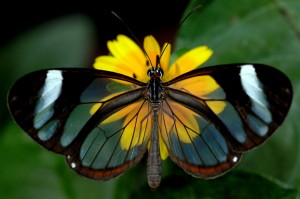There were two things that always seemed out of place in the parking lot of the Whole Foods in Edgewater, NJ – my little Subaru crammed in among all the luxury SUVs and the wild monk parakeets. Monk parakeets, are Native to South America, but they were brought to the US to be sold as pets. After escaping captivity, they’ve developed hefty populations in several cities across the country, including Edgewater, NJ. Some folks love having them around because they’re cute and exotic. But there’s a problem: monk parakeets like to build their nests on power lines, which poses a serious fire hazard and a major headache for utility workers.

Monk parakeets are not the only escaped pets that have colonized new territory, but they are some of the lucky ones. Their populations remain more than stable in their native range. For too many other animals unrelenting, and often illegal, wildlife trade has been devastating and it’s driven countless species to the brink of extinction. But a new study published in the journal Frontiers in Ecology and the Environment has shown that numbers of some threatened species, while still declining in their native range, are strong and growing in places where they have been introduced.
One example the authors give is the yellow-crested cockatoo. Since 1940, the number of yellow-crested cockatoos in their native range of Indonesia and East Timor has plummeted from tens of thousands of birds to presently somewhere in the range of only thousands. The primary driver of this decline is international wildlife trade. Yellow-crested cockatoos are popular pets, but like the monk parakeets in New Jersey, they escaped captivity and made themselves at home in Hong Kong. And just like the monk parakeets, their presence is not one hundred percent welcome.

Today there are hundreds of feral cockatoos in Hong Kong. An increase in numbers may seem like good news for any threatened species, but threatened or not, introduced species can be a nuisance. The yellow-crested cockatoo can compete with resident birds for resources, posing a potential threat to native species.
And there’s the rub. Hong Kong is playing a critical role in the conservation of the yellow-crested cockatoo, but the cockatoo may pose a threat to the conservation of Hong Kong’s native birds. What can be done?
The authors suggest a solution: put the birds back where they came from.
It sounds like a simple idea, but unfortunately it’s not. Relocating birds from Hong Kong back to Indonesia and East Timor could help strengthen their numbers in the face of continued pressure from wildlife trade, but the authors note that the science of reintroduction is not well understood and implementing this kind of conservation effort would need to be done with caution. Another possible solution the authors pose is to manage the introduced birds in Hong Kong for the pet industry in the hope that this will reduce the number of birds taken from their native range.
But the cockatoo is just one example – the authors present a long list of different types of animals whose populations have been ravaged in their native range, but are thriving in new areas where they have been introduced.

Studies such as this remind us of the devastating impact wildlife trade has on biodiversity. But it also reminds us that science brings us creative solutions to these problems and hope for the future.
Source: http://onlinelibrary.wiley.com/wol1/doi/10.1002/fee.1449/abstract

